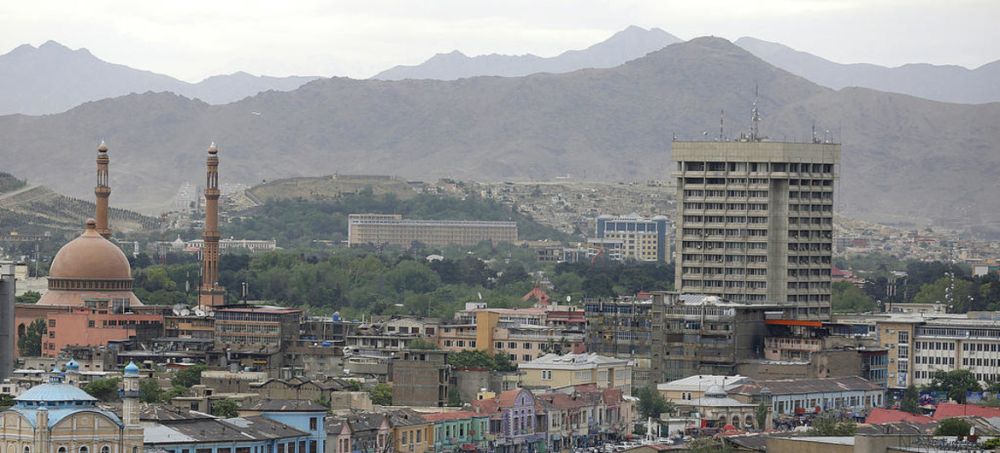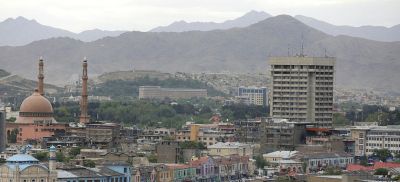

The Gardens of Babur, also known as Bagh-e Babur, is an exquisite historic site and a serene getaway in the bustling city of Kabul. Founded in the early 16th century by the first Mughal Emperor Babur, the gardens are among the oldest surviving Mughal garden sites and were restored after 2001. Visitors can walk through the beautifully landscaped tiers of flowering plants, which lead up to Babur's tomb, while exploring the sites of the mosque, caravanserai, and the pavilion added by Shah Jahan. With its terraced lawns, flowing watercourses, and abundant foliage, the Gardens of Babur offer a peaceful retreat and an opportunity to delve into Afghanistan's rich history. It's an ideal spot for history buffs and nature lovers alike, where one can spend a good half day absorbing the regal atmosphere and panoramic views of Kabul.
Situated in the west of Kabul, the National Museum of Afghanistan, also known as the Kabul Museum, is a treasure trove of artifacts showcasing the rich cultural history of the country. The museum's collection spans over several millennia, including items from prehistoric times, classical antiquity, and Islamic periods. With a history of looting due to civil conflicts, the museum has made considerable efforts to recover stolen pieces and restore its exhibits. Visitors can marvel at the unique displays of ancient tools, historical Buddhist artworks, exquisitely carved ivory, and a diverse collection of Islamic art. The National Museum provides an insightful experience into Afghanistan's past, making it a must-visit for anyone interested in the archaeological and historical legacy of the region. Allow yourself a couple of hours to take a thorough tour and appreciate the artifacts on display.
Wander through the famous Chicken Street, the renowned shopping hub in the heart of Kabul. Chicken Street has been a popular destination among tourists for decades, offering a multitude of shops that sell a variety of local crafts, rugs, jewelry, antiques, and souvenirs. Despite its name, you won't find poultry here; the street earned its moniker from the poultry sellers who once populated the area. Instead, you will find a vibrant marketplace where haggling is part of the experience. Browse through Afghan carpets known for their intricate designs, or pick up some lapis lazuli stones, a treasure of Afghanistan. Allow yourself to get lost in the colorful array of products, and take the opportunity to chat with the friendly locals and shop owners. Visiting Chicken Street is not just about shopping; it's a cultural experience that gives you a sense of Kabul's local life and craft traditions.
Bala Hissar Fortress sits on a hill at the southern end of Kabul, providing visitors with a glimpse into the city's tumultuous history. The ancient citadel dates back to the fifth century and has been a focal point of many invasions due to its strategic location. Although much of the original fortress was destroyed in the 19th century, the ruins still speak volumes of its former grandeur. Visitors are encouraged to explore the remaining structures, including the walls and gates, while enjoying panoramic views of Kabul sprawling below. The site also holds significance as it has witnessed numerous historic events and served as a royal residence. Bala Hissar is a symbol of endurance, offering not only historical insights but also a chance for contemplation and photography against a backdrop of Afghanistan's everchanging landscape.
The OMAR Mine Museum offers an educational and sobering look at Afghanistan's history with landmines and the broader efforts of demining in the region. 'OMAR' stands for the Organization for Mine Clearance and Afghan Rehabilitation, and the museum displays a collection of more than 60 types of landmines out of the hundreds that have been used in Afghanistan over the years. Beyond landmines, the museum also exhibits unexploded ordnances and other military hardware. It serves as a stark reminder of the impact of war on innocent civilians and provides valuable information about the ongoing work to make Afghanistan a safer place. Its educational programs and guided tours can be enlightening, particularly for those interested in military history and humanitarian efforts. The OMAR Mine Museum is a unique institution that stands as a testament to the resilience and perseverance of the Afghan people.
Qargha Reservoir, located just outside Kabul, is a popular recreational area for locals and tourists alike. This man-made lake is surrounded by rolling hills and offers a tranquil setting for a variety of activities. Whether you want to enjoy a leisurely picnic, take a boat ride on the calm waters, or just relax and enjoy the natural beauty, Qargha provides a much-needed respite from the city's hustle and bustle. In addition, several restaurants and chaikhanas (tea houses) dot the shoreline, offering traditional Afghan cuisine and refreshments. Families often come here on weekends to unwind and participate in fun activities like fishing, horseback riding, or bird watching. Qargha Reservoir represents a slice of local life and leisure, where the natural and serene environment allows for a peaceful retreat and the opportunity to experience Afghanistan's scenic beauty.
Cricket is an incredibly popular sport throughout Afghanistan, and what better way to experience the local culture than by attending a match at the Kabul International Cricket Stadium? The stadium, which opened in 2011, is a hub of excitement and community spirit when local or national cricket teams play. Spectators can immerse themselves in the thrilling atmosphere as they watch skilled players compete on the pitch, and perhaps even partake in the local snacks and beverages sold around the stadium. Enjoy the camaraderie of local fans, and if you're new to the sport, take the opportunity to learn more about it from those around you. Attending a cricket match here is not just a pastime; it's a chance to mingle with Afghans and share in one of their most passionate sporting spectacles.
Darul Aman Palace, located just outside the central area of Kabul, is an emblematic landmark that encapsulates the changing fate of Afghanistan. The once magnificent palace has been restored after enduring neglect and damage from decades of conflict. Designed in the 1920s by German architects, it was intended as part of the modernization efforts by King Amanullah Khan. The palace's regal façade and European-inspired design still exude a haunting beauty. While visitors in the past could wander amidst its ruins, the palace has recently undergone major restorations. Today, Darul Aman Palace stands as a testament to the resilience of the Afghan people and their perseverance amidst adversity. A stroll around the palace grounds provides an opportunity to reflect on Afghanistan's history while observing an icon of Kabul's skyline, especially as the sun sets and casts its warm glow on the building's pillars and arches.
While not located directly in Kabul, but in the nearby Bamyan province, an adventurous outing to the Bamyan Ski Club is an unforgettable experience for those willing to travel a bit further out. The club was established to promote ski tourism in Afghanistan and offers a unique opportunity to ski in the breathtaking Hindu Kush mountains. The beauty of skiing in Bamyan lies not just in the powdery slopes and the stunning scenery, but also in the chance to engage with a local community eager to introduce visitors to this thrilling sport. There aren't any ski lifts, so you'll have to trek up the slopes, but the reward is a serene ski experience like no other. Also, the Bamyan Valley is famous for the giant Buddha statues, although they were destroyed in 2001, their niches and the surrounding cultural landscape remain as an impressive testament to the region's historical significance.
The Kabul Zoo is a unique point of interest in the city, offering visitors a glimpse into the world of both local and international wildlife. Having endured through times of conflict, the zoo nowadays is a place of conservation and education for the people of Kabul and its visitors. Home to a variety of animals, including Afghan wildlife and more exotic species, the zoo provides a leisurely stroll and an enjoyable outing for families and animal lovers. Encounters with lions, leopards, and bears are complemented by more tranquil visits to the bird aviary and smaller mammal enclosures. The zoo is not just an attraction but also serves as a symbol of hope and a reminder of the importance of protecting all living beings. A visit here can be both entertaining and heartwarming, as it reflects the efforts put forth to maintain a sanctuary for these animals amid the city's complex dynamics.
